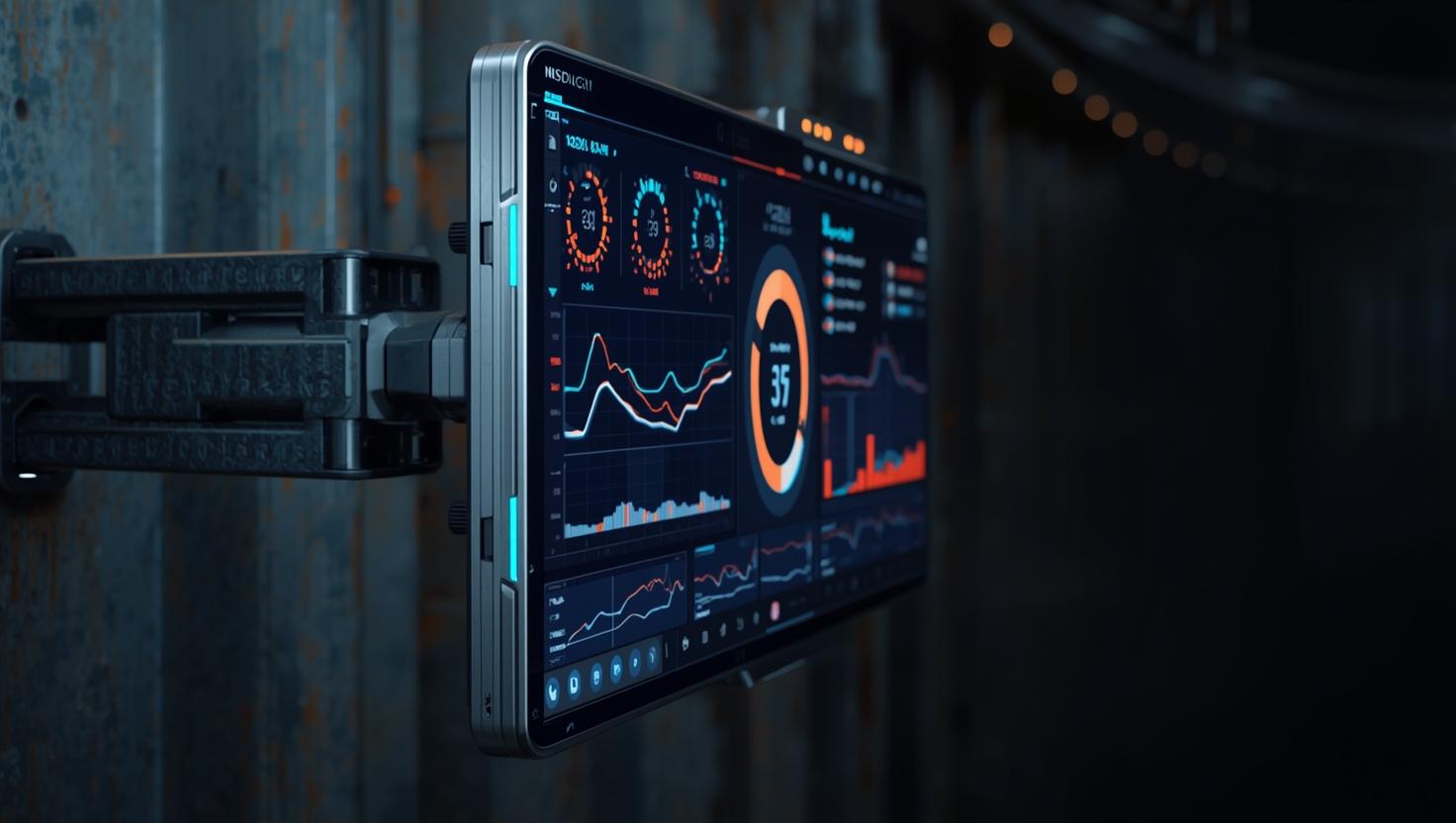The Industrial Internet of Things (IIoT) is rapidly transforming manufacturing landscapes worldwide, and at the heart of this transformation lies the Industrial IoT display industry. As factories become smarter and more connected, the demand for advanced display technologies that can handle real-time data visualization, human-machine interaction, and rugged environments is surging. This surge is driving unprecedented growth in the Industrial IoT display market.
The Role of Displays in Smart Manufacturing
Industrial IoT displays serve as critical interfaces between machines, operators, and control systems. In smart manufacturing, these displays provide real-time insights into production processes, equipment status, and analytics, empowering operators to make informed decisions swiftly. Unlike consumer displays, industrial-grade screens must endure harsh conditions such as extreme temperatures, dust, moisture, and vibrations, while maintaining clarity and responsiveness.
Industrial IoT display market Key Drivers of Growth
Several factors are fueling the rapid expansion of the Industrial IoT display market:
-
Industry 4.0 Adoption: The ongoing shift towards Industry 4.0 — characterized by automation, data exchange, and cyber-physical systems — requires robust display solutions that can visualize complex data and integrate seamlessly with IoT devices.
-
Demand for Real-Time Monitoring: Manufacturers are prioritizing real-time monitoring to reduce downtime, optimize workflows, and enhance safety. Industrial IoT displays provide the necessary interface for continuous supervision and control.
-
Advances in Display Technologies: Innovations such as high-resolution touchscreens, flexible displays, and sunlight-readable panels are making industrial displays more versatile and user-friendly.
-
Customization and Integration: Manufacturers seek displays that can be customized for specific applications, such as control panels, dashboards, and wearable devices, facilitating better integration with existing systems.
Download PDF Brochure @ https://www.marketsandmarkets.com/pdfdownloadNew.asp?id=245560788

Applications Across Industries
Industrial IoT displays find applications across diverse sectors including automotive, aerospace, pharmaceuticals, food and beverage, and energy. In automotive plants, for example, these displays help monitor robotic arms and assembly lines. In the pharmaceutical industry, they ensure strict environmental controls and traceability. Such versatility underscores the importance of reliable, high-performance displays in industrial settings.
Challenges and Opportunities
Despite strong growth prospects, the Industrial IoT display industry faces challenges like high initial costs, compatibility issues with legacy systems, and cybersecurity concerns. However, these hurdles also create opportunities for innovation. Companies that develop rugged, secure, and cost-effective display solutions tailored to industrial needs will gain a competitive edge.
The Future Outlook
The future of the Industrial IoT display industry is bright, with market forecasts indicating significant growth in the next five years. As smart manufacturing continues to evolve, demand for intelligent displays that enhance visibility, control, and efficiency will only intensify. Collaborations between display manufacturers, IoT solution providers, and industrial end-users will play a crucial role in shaping this landscape.
The convergence of Industrial IoT and advanced display technologies is accelerating the growth of smart manufacturing worldwide. Industrial IoT displays are not just screens; they are gateways to smarter, safer, and more efficient production environments. As industries embrace digital transformation, these displays will continue to be indispensable tools driving innovation and operational excellence.
Frequently Asked Questions (FAQ) – Industrial IoT Display Industry
Q1: What are Industrial IoT displays?
A: Industrial IoT (IIoT) displays are specialized screens used in manufacturing and industrial environments to visualize real-time data, monitor systems, and interact with machines. They are built to withstand harsh conditions such as dust, moisture, vibration, and extreme temperatures.
Q2: How are Industrial IoT displays different from regular consumer displays?
A: Unlike consumer displays, Industrial IoT displays are ruggedized, offer higher durability, and are optimized for continuous operation. They often include touch interfaces, sunlight readability, and resistance to industrial hazards.
Q3: What role do IIoT displays play in smart manufacturing?
A: IIoT displays provide real-time visualization of production data, equipment status, and performance metrics. They are essential for process monitoring, machine control, predictive maintenance, and improving overall efficiency on the factory floor.
Q4: Which industries use Industrial IoT displays?
A: These displays are used across multiple sectors, including automotive, aerospace, energy, pharmaceuticals, food and beverage, and heavy machinery manufacturing.
